I absolutely love Saggubiyyam | Sabudana | Javvarisi (Sago), and being in Maharashtra, I can find it in a myriad forms around me. As Sabudana Khichadi, Sabudana Vada, Sabudana Kurdai, Sabudana Papad, Sabudana Mixture, Sabudana Thalipeeth … One of my absolutely favourite Sabudana-based dishes is Saggubiyyam Paramannam | Sabudana Kheer | Javvarisi Payasam.
Saggubiyyam Payasam | Javvarisi Payasam | Sabudana Kheer
I make Saggubiyyam Paramannam often on Pooja days as it is easy to make and needs minimal cooking. For example, I made it last year for Varalakshmi Vratam as a part of the Maha Naivedyam that included Chintapandu Pulihora | Tamarind Rice, Mudda Pappu, Mukkala Pulusu | Bellam Pulusu, Bendakaya Vepudu, Kobbari Pachadi.
Unlike the traditional Pal Payasam that needs to be cooked for a while to get a creamy texture, Saggubiyyam Paramannam derives its creaminess from the starch in the sago. As a result, you have a rich Sabudana Kheer with minimal cooking. I also cut down cooking time by pre-soaking the Sabudana.
How to Make Saggubiyyam Paramannam| Sabudana Kheer | Javvarisi Payasam
Saggubiyyam Paramannam | Sabudana Kheer | Javvarisi Payasam
Ingredients
- 1/2 Cup Sabudana, Javvarisi, Saggubiyyam (About 100 Gms)
- 1/2 Litre Milk
- 2/3 Cup Sugar (About 75 Gms)
- 1 Tbsp Split Cashew
- 1 Tbsp Golden Raisins, Kishmish
- 1 tsp Cardamom Powder
- 1 tsp Ghee
Instructions
- Soak the Sabudana in about 2 cups water for 30 minutes.
- Drain all the water and set aside.
- In a heavy bottomed vessel, heat the ghee.
- Add the split cashews and kishmish. Stir-fry till the dry fruits start to change colour.
- Add the milk and bring to a boil.
- Turn the heat down to low and add the soaked Sabudana.
- Turn the heat up to medium and let the Sabudana cook in the simmering milk till it turns translucent.
- Add the sugar and cardamom powder, and mix well.
- Turn off the heat.
- Serve warm or chilled.
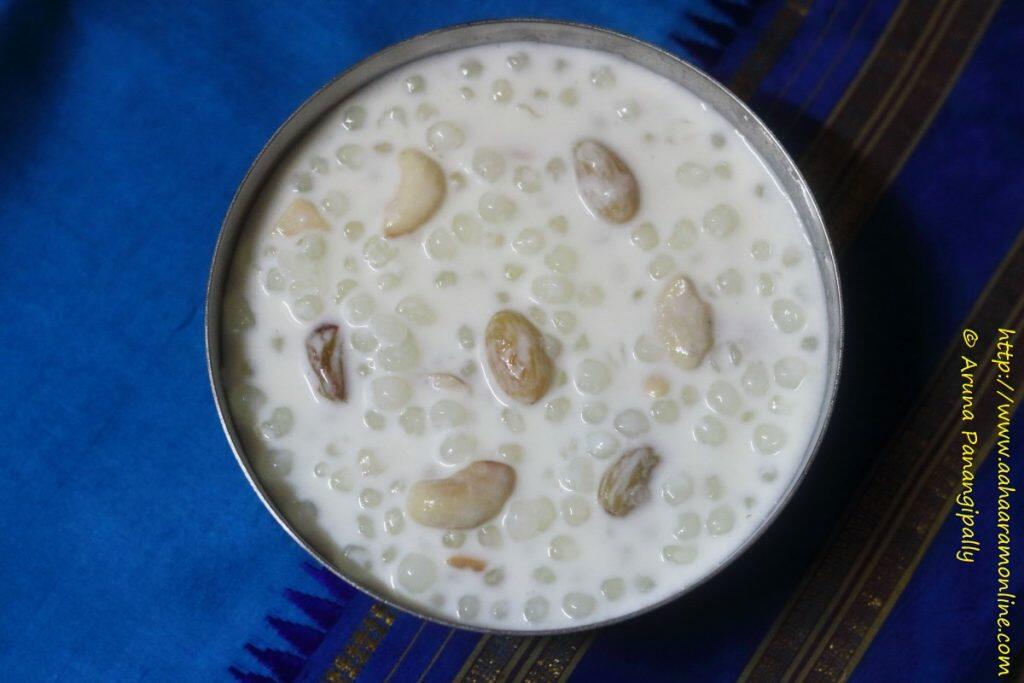
Sabudana Kheer
Recipe with Step-by-Step Instructions to Make Saggubiyyam Paramannam| Sabudana Kheer | Javvarisi Payasam
- Presoak the Sabudana (This is not an essential step. It just helps reduce the cooking time.)
- Add 2 cups water to the sago and let the sago soak for 30 minutes.
- Using a colander, drain all the water from the sago. Let the sago remain in the colander till you are ready to use it.

- Cooking the Saggubiyyam Paramannam| Sabudana Kheer | Javvarisi Payasam
- In a heavy bottomed vessel, over medium heat, melt the ghee.
- Next, add the cashews and raisins, and fry till the cashew turns light brown and the rains starts to puff.

- Pour the milk into the vessel and let it come to a boil.

- Turn the down the flame and add the sago to the milk.
- Turn the heat up to medium and let the sago cook in the simmering milk. You know the sago is cooked when it turns translucent. Stir at regular intervals to ensure the sago does not stick to the bottom.

- When the sago is cooked, add the sugar and cardamom powder to the Saggubiyyam Paramannam and mix well.
- Take the paramannam off the heat and let it rest for at least 10 minutes.
- You can serve the paramannam warm or chilled.
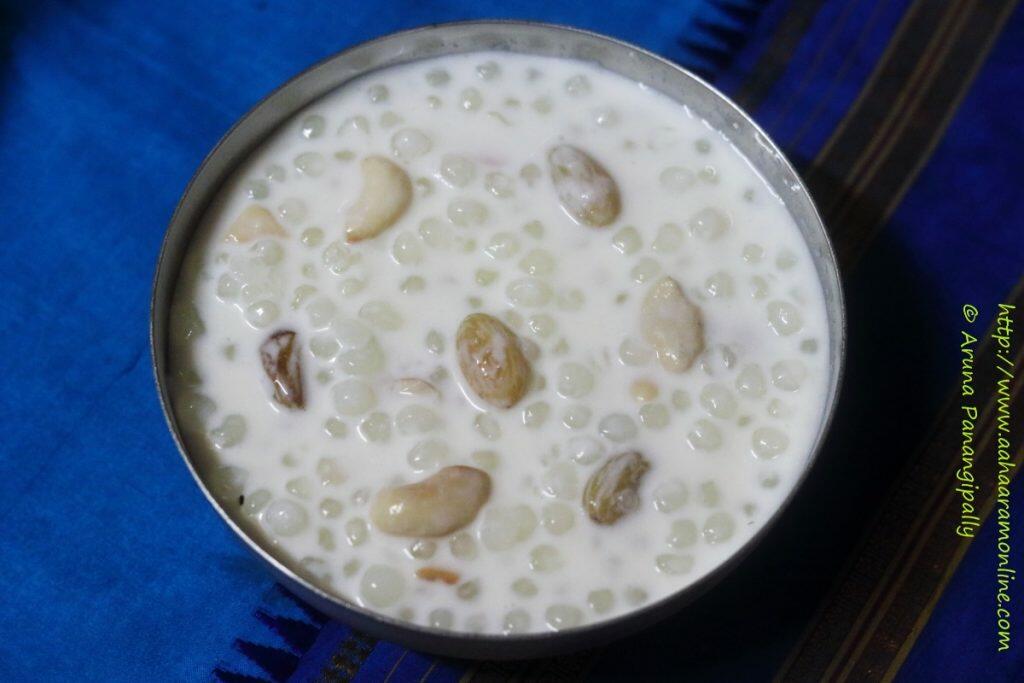
Saggubiyyam Paramannam
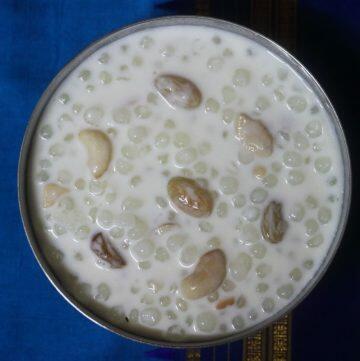
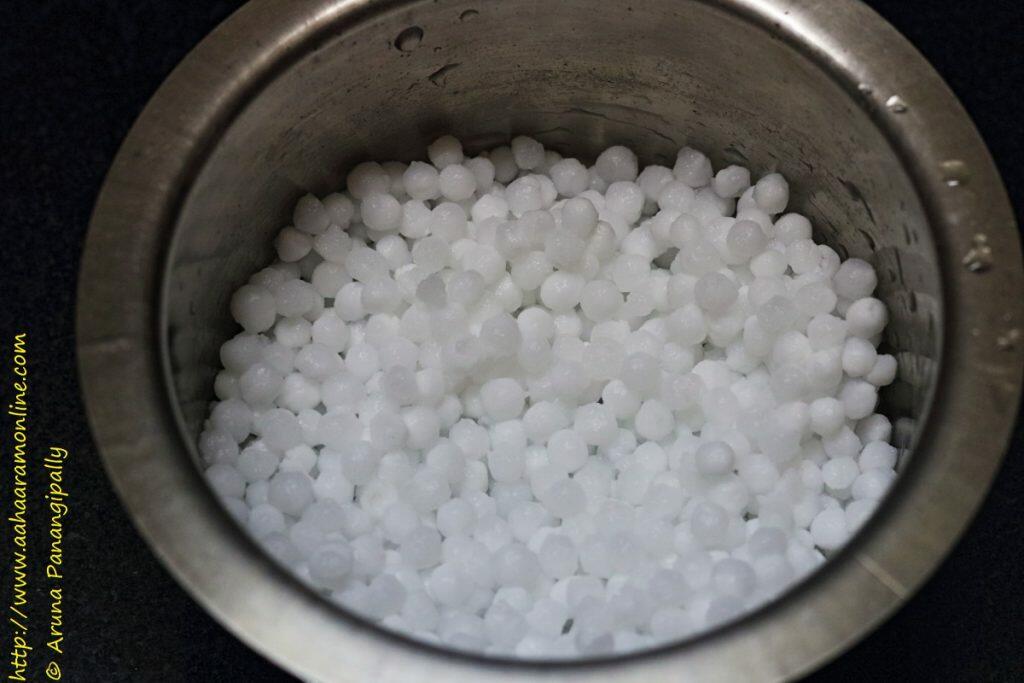
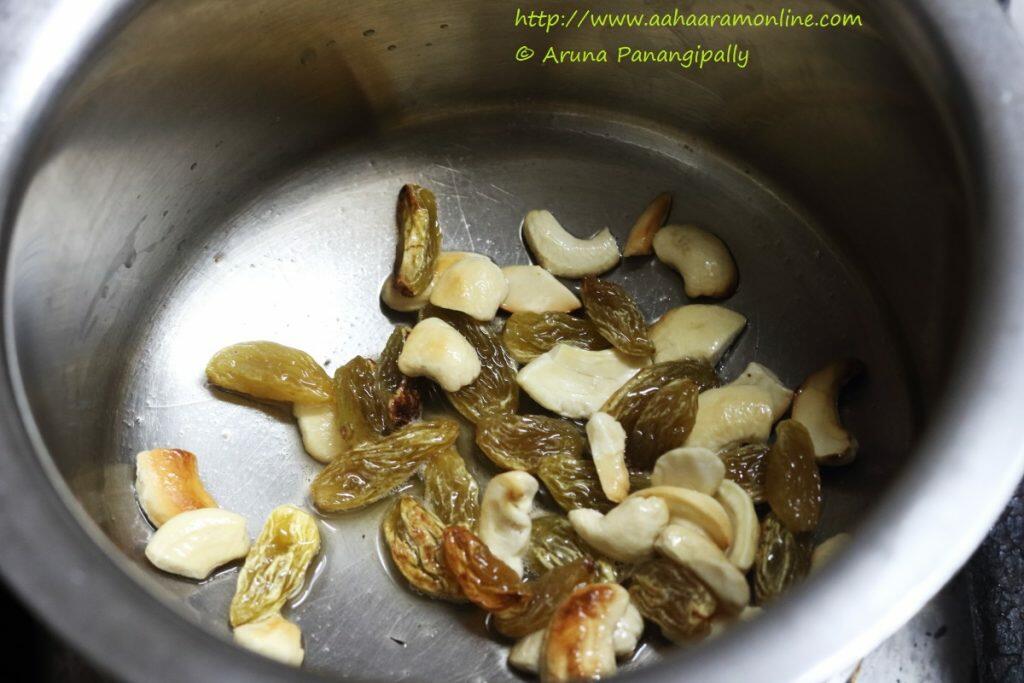
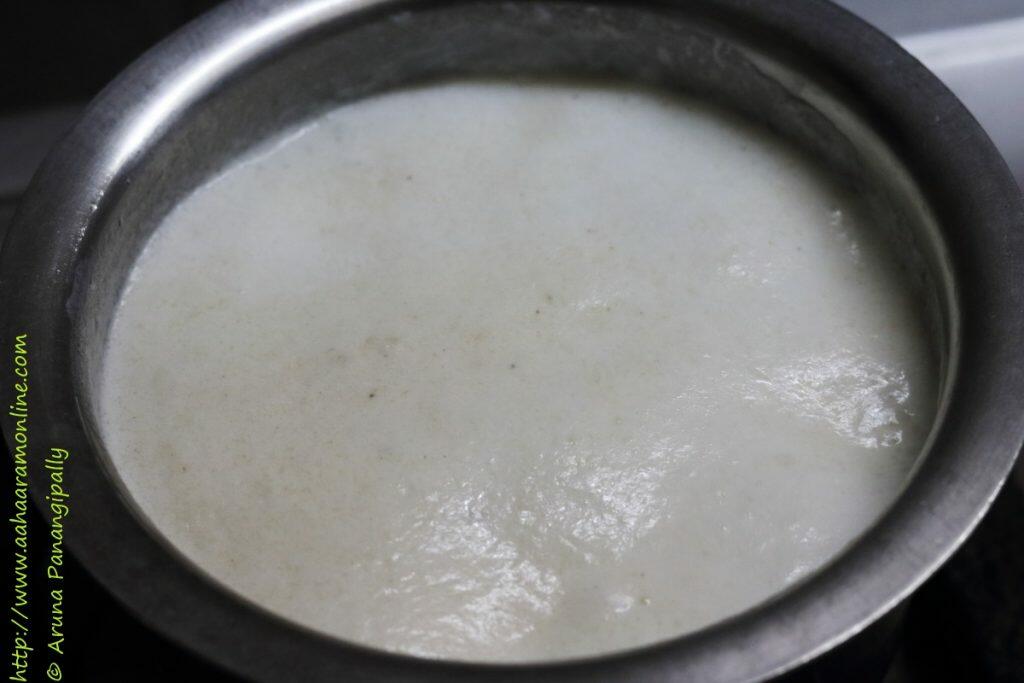


first paragraph. 😀 ))) Please educate us, who are not familiar with the names, will you please add parentheses telling us what they mean, i.e, food, holy event, etc. Are they all Indian words?
:-D:-D
Here you go, Fae…..
Pooja essentially means worship. During a pooja, we light a lamp and incense, offer flowers and fruits to the God and/or Goddess accompanied by ritual chanting. This happens daily in many Hindu homes.
In addition, we offer cooked food and this is called Naivedyam.
Certain days of the Hindu calendar are special for certain Gods or Goddesses. Yesterday was one such day dedicated to Lakshmi, the Goddess of Wealth and Prosperity. This day is observed in the South Indian states of Andhra Pradesh, Tamil Nadu, and Karnataka.
On this day, we worship a form of Lakshmi called Vara Lakshmi Or Lakshmi who grants all your wishes. (In India, we have hundreds of thousands of gods and goddesses, and each of them can have many forms…. Too complex to explain as a comment!)
When we do these special poojas, then there are multiple rounds of Naivedyam. For example, at different times during the Varalakshmi we offer:
At the very end, we offer Maha Naivedyam or the Great Naivedyam. This includes several cooked food items (typically 11, 16, 21 or even 56 items).
Among the many things i had for Maha Naivedyam are:
And of course, Saggubiyyam Payasam. 🙂
I hope I did not make you regret asking a question. 🙂
No Darling, thank you for the detailed explanation. I will read it a few more times to imagine the whole Feast in my mind. May your pooja to Lakshmi, the Goddess of Wealth and Prosperity be heard… and always include ‘health’ in there too! Lovely!
Give me the sabudana khichidi any day! Happy Vara Lakshmi!
Aaruna, you have given me a wonderful dessert recipe. It is a joy to enter your cooking world. Virginia
So you made it. Wow, nice presentation!
Yup…..
Hi aruna,meeku mee kutumba sabhyulaku maa nutana samvatsara subhakankshalu.sago payasam is my favourite.but somehow never tried it.i am planning to make it in ugadi.i have one doubt,roughly how much time does sago take to cook? Is prior soaking needed.should i take the very small sago for this preparation.never cooked sago before.i like sabudana khichidi also very much.
Namaskaaram Sri Sudha-garu,
Please use the normal sago. If you use the very small sago, it will lump.
You could soak the Sago for about 30 mins and then drain the water. It takes the unsolved sago about 15 minutes to cook and soaked sago about 1/2 that much time. Please do cook it over low heat and in enough water. because otherwise the sago cooks on the outside but not inside. And stir constantly, otherwise it will form lumps.
Hope this helps.
Meeku Mee Kutumbaaniki Nutana Varsha Shubhaakaankshalu. 🙂
Thank you aruna . Will let u know about the outcome.feeling a bit apprehensive with sago.my atthaiya makes very good payasam.i mean my paternal aunt.lives in vizag.i like ur blog.feels like i am going thru my elders cooking.by the way myself and my husband ,we liked the cabbage and peas koora recipe,came out very well.
Hi aruna,followed ur instructions to the T,came out very well.thank you.have a great day
Looks so delicious !
Well, every one must see in the ingredients sugar is mentioned but in recipe its not there when to add it. Lol